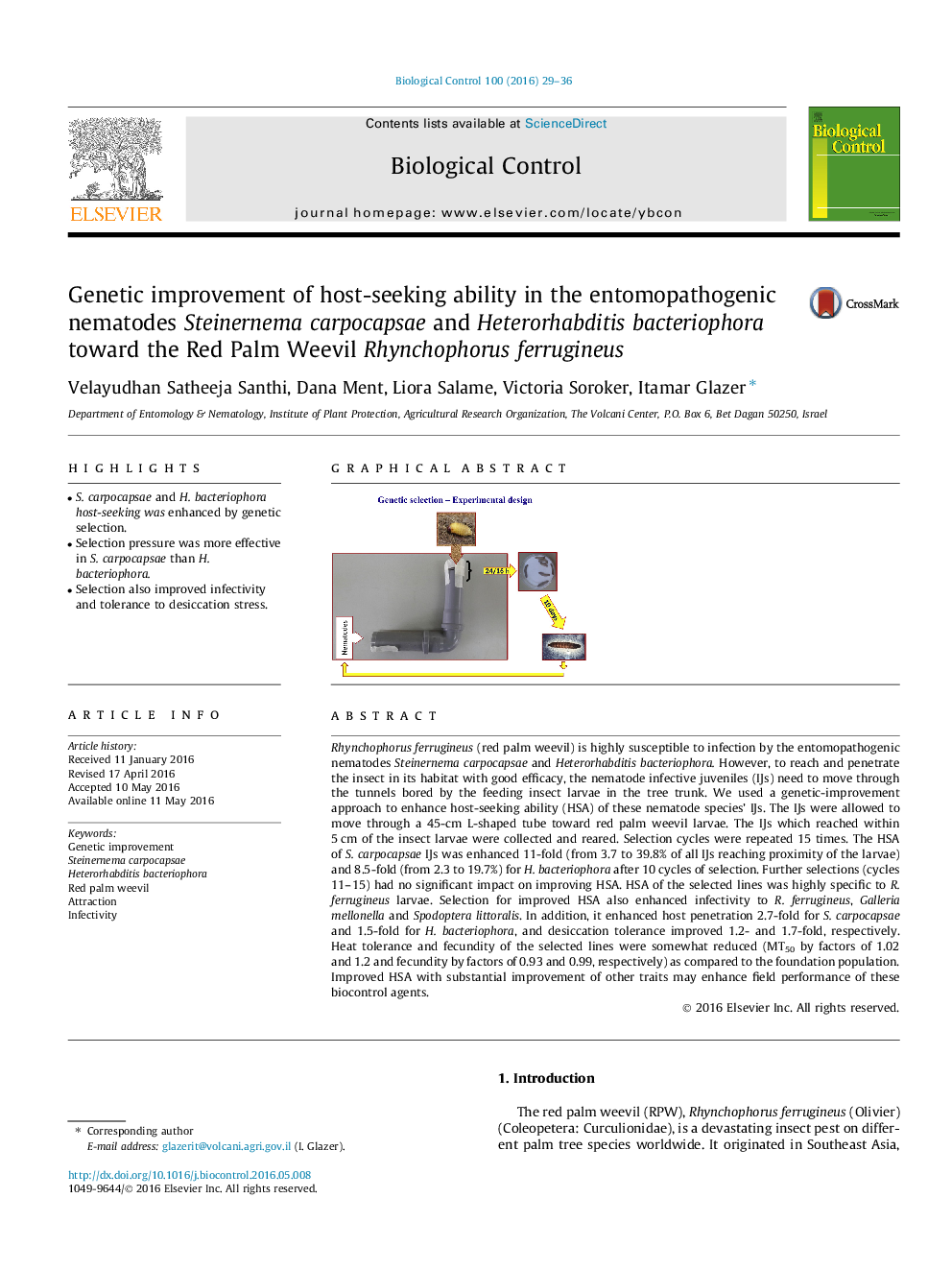| کد مقاله | کد نشریه | سال انتشار | مقاله انگلیسی | نسخه تمام متن |
|---|---|---|---|---|
| 4503584 | 1624234 | 2016 | 8 صفحه PDF | دانلود رایگان |

• S. carpocapsae and H. bacteriophora host-seeking was enhanced by genetic selection.
• Selection pressure was more effective in S. carpocapsae than H. bacteriophora.
• Selection also improved infectivity and tolerance to desiccation stress.
Rhynchophorus ferrugineus (red palm weevil) is highly susceptible to infection by the entomopathogenic nematodes Steinernema carpocapsae and Heterorhabditis bacteriophora. However, to reach and penetrate the insect in its habitat with good efficacy, the nematode infective juveniles (IJs) need to move through the tunnels bored by the feeding insect larvae in the tree trunk. We used a genetic-improvement approach to enhance host-seeking ability (HSA) of these nematode species’ IJs. The IJs were allowed to move through a 45-cm L-shaped tube toward red palm weevil larvae. The IJs which reached within 5 cm of the insect larvae were collected and reared. Selection cycles were repeated 15 times. The HSA of S. carpocapsae IJs was enhanced 11-fold (from 3.7 to 39.8% of all IJs reaching proximity of the larvae) and 8.5-fold (from 2.3 to 19.7%) for H. bacteriophora after 10 cycles of selection. Further selections (cycles 11–15) had no significant impact on improving HSA. HSA of the selected lines was highly specific to R. ferrugineus larvae. Selection for improved HSA also enhanced infectivity to R. ferrugineus, Galleria mellonella and Spodoptera littoralis. In addition, it enhanced host penetration 2.7-fold for S. carpocapsae and 1.5-fold for H. bacteriophora, and desiccation tolerance improved 1.2- and 1.7-fold, respectively. Heat tolerance and fecundity of the selected lines were somewhat reduced (MT50 by factors of 1.02 and 1.2 and fecundity by factors of 0.93 and 0.99, respectively) as compared to the foundation population. Improved HSA with substantial improvement of other traits may enhance field performance of these biocontrol agents.
Figure optionsDownload as PowerPoint slide
Journal: Biological Control - Volume 100, September 2016, Pages 29–36